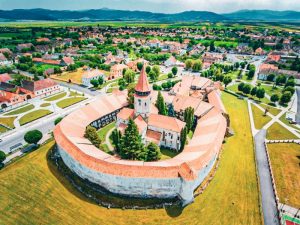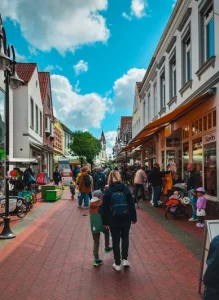Are you planning to travel to Romania and wondering if it´s worth visiting? Just to spill the beans: Romania will surprise you with incredible places and things to see. The country is mostly known for the Dracula castle and supposedly spooky and mysterious Transylvania. If you´re reading this guide, that´s about to change!
Travelling to Romania for the first time can be quite challenging if you don´t know anything about the country. If you ask the Internet about the best things to do in Romania, you will mainly get very general AI-tailored answers. Dracula castle, Transfagarasan Highway or Danube Delta are some of the main highlights you will find. However, you will find very little information on travel itineraries, how public transportation works, what to know about driving and parking in Romania, destinations for families etc.
As a Romanian native, I can help you with that! I spent 22 years in Romania and have lived in 3 different cities during this time. After moving to Germany in 2017, I still travel to Romania with my family every year. As our vacation days are limited (no, we are not full-time travel bloggers), we always try to make the most of our stay.
In this complete travel guide I put together essential information on Romania, best things to do by regions and interests, travel costs, how to get around in Romania and find a suitable accommodation for your budget as well as my best local Romania travel tips.
Let´s get started planning your dream holiday to Romania!
- Geography of Romania: Regions, cities and location in Europe
- Best time to travel to Romania
- Visa and entry requirements
- Getting to Romania: BEST Option
- Where to stay in Romania?
- BEST things to do if you travel to Romania
- How to get around in Romania: trains, public transportation and car rental
- Rent a car in Romania
- Budget for holidaying in Romania
- Final thoughts
Geography of Romania: Regions, cities and location in Europe
If you are thinking about travelling to Romania, I put together some essential information on the countries geography, most important cities and regions so you have the proper orientation to plan your trip.
Romania in Europe
Romania is strategically located in Eastern Europe, sharing borders with Bulgaria, Serbia, Hungary, Ukraine, and Moldova. With an area of approximately 238,397 square kilometers, Romania ranks as the twelfth largest country in Europe. Its geographical position near Turkey, Russia and the Black Sea has significantly influenced its cultural heritage and historical development.
Romania´s landscape
The country’s landscape is remarkably diverse, with about 31% covered by the majestic Carpathian Mountains, which form a natural arc that almost separates Transylvania from the rest of the country. Mount Moldoveanu stands as Romania’s highest peak at 2,544 meters. Forests blanket approximately 30% of the country’s surface, and remarkably, Romania hosts about 70% of Europe’s primary forests. This unique natural wilderness in Europe makes Romania a paradise for nature lovers and outdoor enthusiasts.
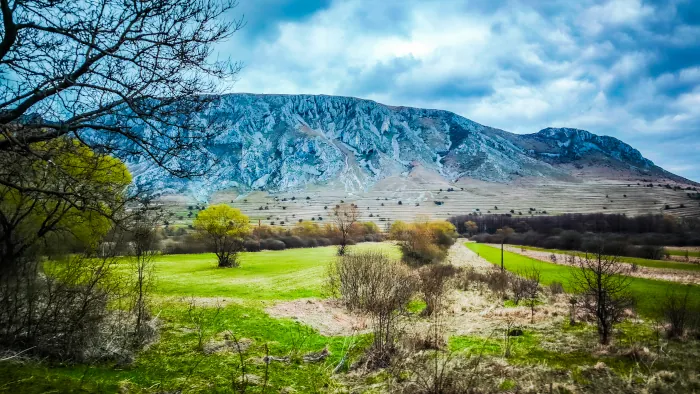
Romanians often describe their country’s shape as resembling a fish, with its tail dipping into the Black Sea. The mighty Danube River forms much of Romania’s southern border and creates the spectacular Danube Delta where it meets the Black Sea – a UNESCO World Heritage site and biosphere reserve, due to its protected bird species and plant diversity including wild orchids.
Best Regions to travel to Romania and top attractions
Now that you know more about the variety of landscapes Romania hast to offer, let´s take a look at the best tourist regions in Romania and what attractions you should not miss.
Transylvania
The largest and most famous region, Transylvania offers visitors a mesmerizing mix of medieval castles, fortified churches, charming old towns, and stunning natural landscapes.
Top attractions include the iconic Bran Castle—known as “Dracula’s Castle” though its vampire lore is mostly myth—and the stunning Corvin Castle in Hunedoara, a Gothic-Renaissance fortress considered one of Europe’s most beautiful castles.
The well-preserved Sighișoara Citadel, a UNESCO World Heritage Site, offers cobblestone streets and colorful houses in one of Europe’s best-kept medieval towns.
Nature lovers and families with kids will enjoy the Salina Turda salt mine, transformed into a unique underground amusement park, and the scenic Bicaz Gorge with its dramatic cliffs and lake.
Cities like Brașov, Sibiu, and Cluj-Napoca provide an amazing cultural scenes with unique museums, medieval architecture, and gateways to the Carpathian Mountains, making Transylvania a must-visit region for a complete Romanian experience.
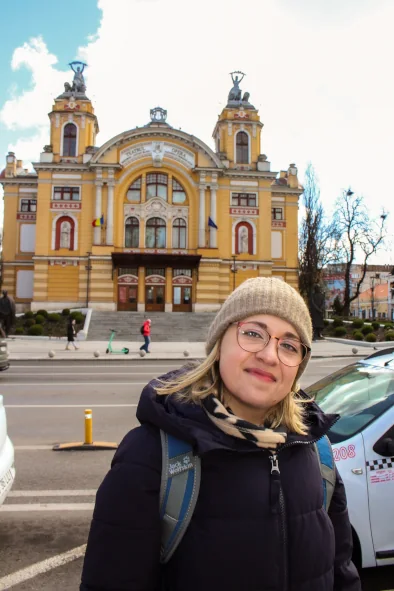
Maramureș
Maramureș is the captivating northern region of Romania where time seems to stand still. This is also the best place to experience traditional rural life in Romania. A highlight of the region is riding the Mocănița steam train along the Vaser River valley—a 21 km journey through dense forests and picturesque mountain landscapes aboard one of Europe’s last authentic narrow-gauge steam railways.
Another must-see attraction is the Merry Cemetery in Săpânța, world-famous for its brightly painted wooden crosses adorned with naive art and humorous epitaphs that celebrate the lives and personalities of the deceased, turning the cemetery into a unique open-air museum and joyful cultural landmark.
Together with the region’s iconic wooden churches like the Barsana church, traditional villages, and mountain parks, Maramureș captures visitors with its serenity and natural beauty.
Bucovina
Known for its 40 painted monasteries, Bucovina is a spiritual and artistic touristic region in Romania’s northeast. Here you should definitely visit the 8 UNESCO-monasteries such as Voroneț, Sucevița and Moldovița with their vivid exterior frescoes.
Another attraction is Vatra Dornei, the region’s premier mountain and ski resort, famous for its therapeutic mineral springs, fresh mountain air, and scenic beauty. Visitors flock here year-round: in winter for skiing and snowboarding on slopes like Dealu Negru and Runc Hill, and in summer for hiking, chairlift rides, and wellness at historic spas.
Wallachia
Wallachia includes the southern region of Romania. Visitors can experience the vibrant capital Bucharest—home to the monumental Palace of Parliament, lively Old Town, and the open-air Village Museum.
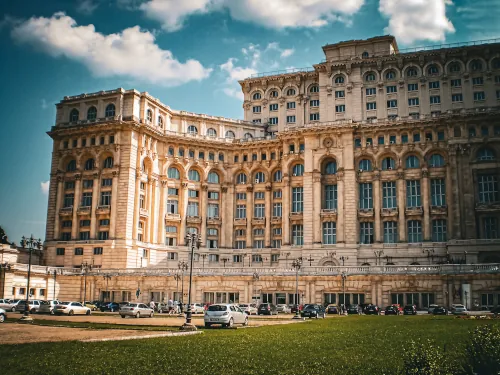
Further attractions include historical treasures such as the Royal Court and Chindia Tower in Târgoviște, and the fairy-tale Peleș Castle in Sinaia nestled in the Carpathians. Nature lovers can explore the dramatic Poenari Citadel – the real home of Vlad Tepes (Dracula), the unique Mud Volcanoes of Buzău, and UNESCO-listed Horezu Monastery, while art enthusiasts shouldn’t miss the modernist masterpieces of Constantin Brâncuși in Târgu Jiu.
Danube Delta & Dobrogea
The Danube Delta is a spectacular UNESCO World Heritage site known for its vast network of waterways, rich biodiversity with over 300 bird species, and unique natural reserves like the ancient Letea Forest with its wild horses. Highlights include charming villages such as Sulina with its historic lighthouse and maritime cemetery, the peaceful beaches of Sfântu Gheorghe, and boat trips exploring the delta’s labyrinth of channels and wildlife.
Dobrogea offers a captivating mix of natural wonders and history, featuring the dramatic Dobrogea Gorges, the ancient Macin Mountains, and the sandy beaches like Mamaia Beach along the Black Sea coast.
Key attractions include the vibrant port city of Constanța with its Roman mosaics and iconic casino, the Genoese Lighthouse in Mangalia, and the renowned Murfatlar Winery, making Dobrogea a perfect blend of outdoor adventure, cultural heritage, and seaside relaxation.
Other notable destinations include the Apuseni Natural Park near the city of Cluj-Napoca, where visitors can exploreforested ridges, dramatic caves, and traditional mountain villages in western Transylvania.
Also worth visiting is the city of Alba Iulia, renowned for its impressive star-shaped Alba Carolina Fortress, the largest Vauban-style fortification in Southeastern Europe. The fortress features historic gates, bastions, and museums that bring Romania’s history to life; key sights include the Romanesque St. Michael’s Cathedral, the neo-Romanesque Coronation Cathedral, and the Union Hall where the 1918 unification of Transylvania with Romania was proclaimed.
My top Tip: If you are visiting Romania for the first time, choose the regions of Transylvania or Wallachia. Here you have the highest density of cities, castles, hiking paths and the best infrastructure. If you are planning to stay more than 1 week in Romania, you can easily combine the region of Transylvania with Maramures and Wallachia with the beaches at the Black Sea to make the most of your visit.
Best time to travel to Romania
The best time to travel to Romania is in summer from June to August. June is great if you want to go hiking, as the weather in the mountains is reliably warm and dry while and wildflowers are still abundant in mountain meadows.
July and August are peak season for tourism in Romania and thermometers regularly climb above 30°C. This is the ideal time to book a beach holiday in one of the Black Sea resorts such as Mamaia Beach, but make sure to book you hotel 3 months before arrival as it gets overcrowded during these months. Popular destinations such as the Dracula Castle or the medieval cities of Brasov, Sighisoara and Sibiu are crowded during this time, so book your hotel, tickets and tours as early as possible.
While summer attracts the largest crowds, especially families restricted by school holidays, it’s also when Romania’s festival calendar is most active, with events celebrating everything from music such as UNTOLD festival in Cluj-Napoca and film (TIFF Transylvania) to traditional crafts and local harvest.
While peak season attracts the most tourists, popular Romanian destinations are still less crowded compared to other spots in Western Europe.
Shoulder season (Spring and autumn) are the right choice, if you prefer fewer crowds, milder temperatures, and spectacular autumn colors painting the landscape during harvest time. For cultural sightseers, early fall is ideal as the summer tourists have departed and city streets are no longer affected by winter’s snow and slush.
Few tourists travel to Romania in winter, due to icy temperatures and frequent snowfall. However, the cities Brasov, Sighisoara and Sibiu have lovely Christmas markets and a cozy atmosphere. If you are interested in winter sports, you can choose Sinaia or Poiana Brasov as your next winter destinations.
Visa and entry requirements
If you travel to Romania as a tourist and only plan on staying less than 90 days, you generally don´t need a visa for Romania.
EU citizens, EEA (European Economic Area) citizens and those of the Swiss Confederation do not need a visa for Romania, but are required to have their passport or any valid national document that attests to their identity. If you are a citizen of the countries mentioned above and plan on staying longer than 90 day in Romania, you will have to register with the territorial units of the General Inspectorate for Immigration.
Citizens of the United Kingdom, USA, Canada, Australia, Japan, South Korea and Singapore do not need a visa for Romania if visiting for less than 90 days.
Non-EU and non-EEA citizens are required to present their passport and a valid entry visa and an invitation (if applicable) at their entry point in Romania. Apply for an online visa here.
Check the latest information of the Romanian Ministry of Foreign Affairs to find out more about specific entry requirements.
Getting to Romania: BEST Option
The easiest, most comfortable and time-saving option to travel to Romania is flying. Since I moved to Germany in 2007 I have been flying every year to Romania to visit my family, generally using the Airlines WizzAir and Lufthansa. I recommend booking 6 weeks before your trip and choosing Tuesday or Thursdays for arrival and departure to get the best prices.
I always book my flights with Trip.com as they offer the best balance between quality and price.
Here is an overview of the main airports in Romania:
Main International Airports:
- Bucharest Henri Coandă International Airport (OTP): Romania’s largest and busiest airport, serving the capital with the most international connections. From here, you can easily connect to other parts of Romania.
- Cluj-Napoca International Airport (CLJ): Serving Transylvania’s unofficial capital with growing international routes, particularly to Western Europe.
- Timișoara International Airport (TSR): A convenient entry point for western Romania.
- Constanta Airport (CND): The gateway to Romania’s beaches and Danube Delta.
- Other Regional Airports: Iași, Sibiu, Bacău, and Suceava also offer international flights, primarily connecting to European destinations.
Airlines and Costs:
Low-cost carriers like Wizz Air, Ryanair, and Blue Air offer the most affordable options for reaching Romania from across Europe. A round-trip costs as little as 170 € if you book in advance. Major carriers like TAROM (Romania’s national airline), Lufthansa, Air France, and British Airways also serve Romanian destinations, providing better baggage allowances and service standards.
For the best deals, choose the month of June, which is particularly noted as an economical month for flying to Romania.
Where to stay in Romania?
Finding a great accommodation suitable to your travel style and needs is not complicated at all if you travel to Romania. If you are backpacker, student or low-budget traveler you will find a hostel bed in Romania ranging from 10 € to 30 € / night. Many hostels in Romania offer breakfast and free WIFI.
As a student I used to book my hostel bed via Hostelworld, because they have the largest inventory of accommodations and search interface.
Mid-range accommodations are available in Romania in the price range of 30 € to 80 €. Do not hesitate to choose guesthouses and pensions over standard hotels. Especially in the rural areas like Maramures, Bucovina or the Danube Delta owners of guesthouses offer better services and cater more to the individual needs of visitors.
Luxury hotels and resorts are also widely available in Romania, especially in large cities like Cluj-Napoca and Bucharest or at the beaches of the Black Sea Coast. Prices range from 80 € to 150+ € and generally include exquisite meals, large climatized rooms, spa and pool options, gym, free WIFI and airport transportation.
I book my hotels via Booking.com and use their Genius Program, which saves me 10 – 15 % per booking.
Here is a selection of my favorite hotels when I travel to Romania:
Bucharest: The Marmorosch Bucharest (€€) – For those who want to indulge in a bit of luxury at a reasonably affordable price, The Marmorosch is the ideal choice. The hotel is located in the center of the Romanian capital, near the Bucharest Athenaeum and only 300 meters from the nearest subway station. Here you will find large rooms, excellent breakfast, a swimming pool and outdoor pool, steam bath, and many great amenities.
Cluj-Napoca: Siesta Boutique Smart Suites (€€) – A modern hotel in the center of Cluj-Napoca, ideally located on a side street. This hotel is ideal for families as it offers apartments and family rooms, express check-in, laundry service, and Wi-Fi. Many attractions are within walking distance. We loved the spacious and modern and climatized room (definitely necessary during summer), self-check-in and proximity to the Old Town, museums and restaurants in Cluj.
Brasov: Schuster Boarding House (€€) – Beautiful hotel with medieval flair in the center of Brasov with family rooms, very good breakfast, airport transfer and shuttle service, and its own restaurant. We appreciated the walking distance to the main attractions in the Old Town of Brasov, great food and architecture of the hotel.
Mamaia Beach: Iaki Conference & Spa Hotel – my top choice for the Black Sea coast, with large apartments and suites, all-inclusive meals and 150 m away from Mamaia Beach. Families can relax here due to facilities such as the kids’ pool, playground, indoor pool when it rains, and spa offers. The amusement parks Aqua Magic Park and Luna Park are a 5-minute drive away, if you are looking for something fun to do.
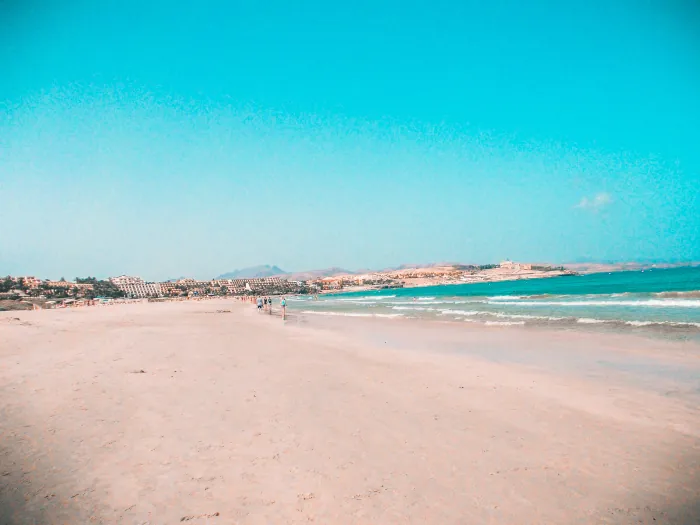
BEST things to do if you travel to Romania
It´s literally impossible not finding something amazing to do in Romania! Here are my favorite and most rewarding activities and attractions to include in your Romanian itinerary:
Explore Medieval Castles and Fortresses
Romania’s turbulent history has left behind impressive defensive structures that now rank among the country’s top attractions:
- Bran Castle: Often marketed as “Dracula’s Castle,” this imposing medieval fortress perched dramatically on a rocky outcrop is Romania’s most famous castle, despite having only tenuous connections to the historical Vlad the Impaler.
- Peleș Castle: Located near Sinaia, this stunning Neo-Renaissance masterpiece was the summer residence of Romania’s royal family and features opulently decorated interiors with over 160 rooms, each with a different theme.
- Corvin Castle (Hunyadi Castle): One of Europe’s largest castles, located in Hunedoara, showcases impressive Gothic architecture with towering defensive structures and a dramatic stone bridge.
- Râșnov Fortress: This historic peasant citadel offers spectacular panoramic views of the surrounding Carpathian landscapes and provides insight into how local communities protected themselves during turbulent times.
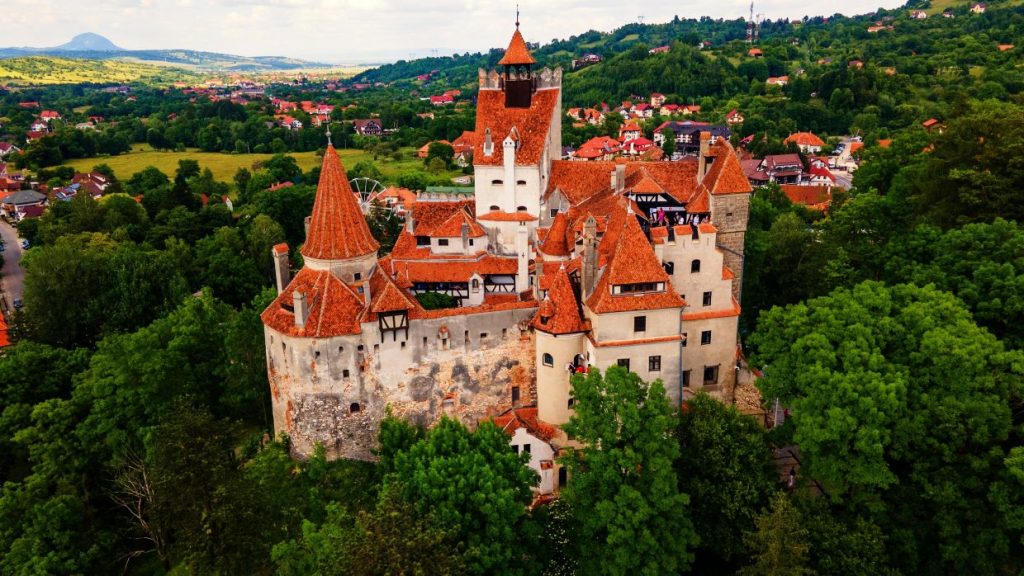
Discover UNESCO World Heritage Sites
Romania boasts several UNESCO-listed treasures that showcase the country’s cultural and historical importance:
- Fortified Churches of Transylvania: Seven villages with fortified churches built by the Transylvanian Saxons between the 13th and 16th centuries represent some of Europe’s best-preserved medieval architectural ensembles.
- Historic Center of Sighișoara: This remarkably well-preserved medieval town features a hilltop citadel with colorful houses, narrow cobblestone streets, and the birthplace of Vlad the Impaler (the historical figure who inspired the Dracula legend).
- Wooden Churches of Maramureș: These traditional wooden churches feature tall spires and intricate wood carvings that represent the unique craftsmanship of this northern region.
- Painted Monasteries of Bucovina: These Orthodox monasteries showcase extraordinary exterior frescoes dating from the 15th and 16th centuries, with colors that have remained vibrant for centuries.
Experience Natural Wonders
Romania’s diverse landscapes offer numerous opportunities for nature lovers:
- Transfăgărășan Highway: Often cited as one of the world’s most spectacular roads, this mountain pass winds through the Southern Carpathians with hairpin turns and breathtaking vistas. The road typically opens from late June to October, depending on weather conditions.
- Danube Delta: Europe’s best-preserved river delta and a UNESCO-protected biosphere reserve hosts over 300 bird species, making it a paradise for birdwatchers and nature photographers. Traditional fishing villages dot the landscape where the mighty Danube meets the Black Sea.
- Bicaz Gorge: This stunning limestone canyon with dramatic rock formations creates a natural passage between Transylvania and Moldova regions, with the Red Lake (Lacul Roșu) nearby offering beautiful mountain scenery.
- Scarisoara Ice Cave: One of the world’s largest ice caves, containing ice formations that are thousands of years old within a massive underground glacier.
Enjoy Outdoor Activities
Romania’s diverse landscapes provide excellent settings for outdoor enthusiasts:
- Hiking in the Carpathians: Romania’s mountain ranges offer trails for all difficulty levels, with particularly beautiful landscapes in the Făgăraș, Retezat, and Bucegi mountains. The well-marked trails range from easy day hikes to challenging multi-day treks.
- Skiing and Winter Sports: Resorts like Poiana Brașov, Sinaia, and Predeal offer excellent skiing and snowboarding during winter months, with more affordable prices than Western European destinations.
- Beach Activities: Relax on the fine white sand beaches of the Black Sea coast at resorts like Mamaia, Eforie Nord, and Vama Veche. The summer season typically runs from June through early September, with July and August being the warmest months.
- River Rafting: Experience white-water adventures on rivers like the Jiu, Buzău, or Crișul Repede, with options available for different skill levels.
Experience Local Culture and Traditions
Here are the best opportunities if you want to get to know Romanian culture and travel off the beaten path:
- Visit Traditional Villages: Explore rural communities in Maramureș, Bucovina or Transylvania where traditional lifestyles, crafts, and architecture are still preserved. Villages like Rimetea, Săpânța (famous for its Merry Cemetery with colorful tombstones), and Breb offer glimpses into Romania’s rural heritage.
- Attend Cultural Festivals: Romania hosts numerous festivals throughout the year, from the Sibiu International Theatre Festival to medieval festivals in Sighișoara and music events like Electric Castle near Cluj-Napoca.
- Experience Folk Traditions: Witness traditional dances, music, and crafts, particularly in regions like Maramureș, Bucovina, and Oaș where ancient customs remain vibrant parts of community life.
Family-Friendly Activities
Romania offers numerous attractions for families traveling with children:
- Amusement Parks: Facilities like Divertiland Water Park near Bucharest and Aquapark Nymphaea in Oradea offer fun water-based activities.
- Bear Sanctuaries: Visit the Libearty Bear Sanctuary near Brașov, where rescued bears live in a natural habitat after being saved from captivity.
- Salt Mines: Explore Salina Turda or Salina Praid, former salt mines transformed into underground theme parks with playgrounds, mini-golf, and boat rides on underground lakes.
- Dinosaur Park Râșnov: This outdoor park features life-size dinosaur replicas in a beautiful forest setting near Râșnov Fortress.
Check out my complete travel guide for families to learn more about planning a vacation with kids in Romania.
How to get around in Romania: trains, public transportation and car rental
The best and money-saving way to get around in Romania if you are planning to stay mainly in one place and take 1-2 tours is using public transportation and Romanian Railway.
However, if your itinerary includes 3 main destinations and several day trips or tours, you should rent a car.
Here’s a quick guide to transportation options to help you move smoothly between and within destinations:
Exploring Romania by train
Romania’s extensive railway network operated by CFR (Căile Ferate Române) connects most major cities and many smaller towns, providing an affordable and scenic way to travel through the country. The train system includes several categories:
- InterCity (IC) and InterRegio (IR): These faster services connect major cities with fewer stops and more comfortable carriages. Routes like Bucharest-Brașov and Bucharest-Constanța have been modernized with newer trains.
- Regio (R): These local trains stop at most stations along their routes. While slower and sometimes using older rolling stock, they reach smaller towns and villages not served by faster trains.
You can travel freely throughout Romania on CFR trains with a valid ticket or rail pass. For longer journeys, consider booking first-class tickets for greater comfort at a relatively modest additional cost.
Please note that trains in Romania are slower than those in Western Europe and do not offer any catering services, so pack some food if you have a longer journey ahead. All Romanian InterCity trains offer free WIFI which you can access after boarding.
Use the CFR-App or 12GO App to book your train tickets and manage bookings.
Longer journeys for example from Bucharest to Cluj-Napoca take about 9.5 hours and cost 145 RON (29 €). Short trips from Bucharest to Brasov (near Dracula Castle) take 2.5 hours and cost 67 RON (13 €).
Public Transportation
Romania’s larger cities have well-developed and affordable public transportation systems including buses, trams or trolleybuses.
The cities Cluj-Napoca, Timișoara, Iași and Oradea use the mobile application Tranzy App to navigate its visitors through the system. Just pop in your start and destinaion and the app will show you the next available transportation and the nearest station. These cities use contactless card systems for payment, but every station also has ticket machines where you can pay cash and available in 5 languages.
A single-ticket ride within the city costs 2-3 RON (0.40 € – 0.60 €), while single-tickets to suburban destinations cost between 3.50 and 13 RON (0.67 – 3 €).
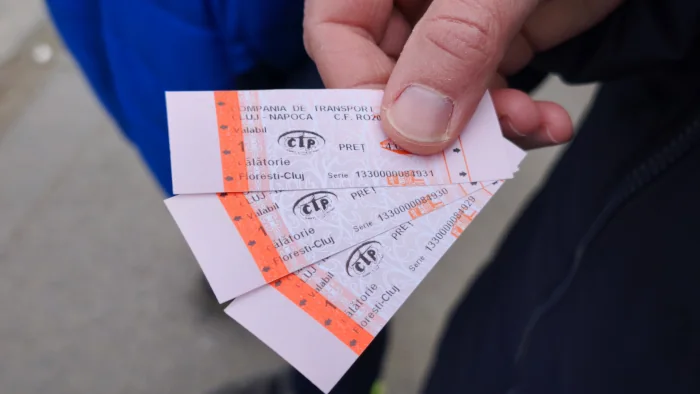
The best way to get around Bucharest is using it´s metro system. A single journey costs approximately 3 RON (0.60 €). If you´re staying 3 days in Bucharest for a city trip, buy a 72-hour metro card for 20 RON (4 €). You can purchase tickets and cards at all metro stations.
Taxis and Ride-sharing are widely available and relatively inexpensive in all cities. Apps like Uber, Bolt, and FREE NOW operate in major cities and help avoid potential overcharging. A typical urban taxi ride costs 10-20 RON (€2-4).
Electric Scooters are also available in major cities. Rental services like Lime, Bolt, and local operators have become popular in Romania, providing a fun way to explore urban areas.
Rent a car in Romania
If you plan to explore several destinations including rural and mountain areas in Romania, renting a car is the best option to do this. Before you get a car rental, here are some essentials you should know about driving in Romania.
1. Driving in Romania
The main highways and national roads (marked “A” for highways (autostrada) and “DN” for national roads) are generally in good condition and well-signposted, especially the recently upgraded Transylvania highway (A3), which makes travel between cities fast and comfortable.
However, once you leave the main routes, you may encounter narrower roads, occasional potholes, and slower-moving agricultural vehicles, especially in rural areas.
Romanian drivers can be impatient, and overtaking on single-lane roads is common, so always drive defensively and stay alert.
Speed limits are strictly enforced: 50 km/h in towns, 90 km/h on country roads, and 130 km/h on highways.
Headlights must be on at all times, regardless of the hour or weather, otherwise you risk paying fines.
Seat belts are mandatory for all passengers, and using a mobile phone while driving is only allowed with a hands-free system.
In Winter (November to March), snow tires are mandatory if roads are covered with snow or ice, and rental companies will provide these if needed.
The blood alcohol limit is zero – no amount of alcohol is permitted when driving.
Police checks are frequent, so always carry your license, ID, rental contract, and proof of insurance. If you plan to drive outside Romania, check with your rental company for cross-border policies and necessary documentation, as extra fees or restrictions may apply.
2. Requirements for car rental in Romania
There are several requirements to rent a car in Romania, which are not very different from other European countries.
Valid Driver’s License – Most car rental companies, whether international or local, require that you present a valid driver’s license. If you are an EU or UK citizen, your national license is accepted without any problems. For travelers from outside the EU, especially from the US, Canada, or Australia, an International Driving Permit (IDP) is highly recommended, and in some cases, mandatory—this permit must be presented alongside your original license.
Passport or ID – For identification purposes, you will need a valid passport or national ID card.
Credit card – A major credit card in the driver’s name is almost always required for the security deposit, though a few local companies may accept debit cards, often with additional conditions or higher deposits.
Minimum age requirement –The minimum age for renting a car is typically 21 or 23, but some companies set the limit at 25, especially for larger or premium vehicles.
3. BEST option to rent a car in Romania
I recommend using Discover Cars for the best prices and conditions.
This platform consistently finds some of the lowest prices available, comparing offers from both international brands and trusted local agencies—sometimes with rates starting as low as 1€ per day for mini and economy cars if you book in advance.
One of the standout features is that you can read verified customer reviews for each rental company and car type, which helps ensure you’re choosing a reputable provider for your trip. In addition to their competitive pricing, Discover Cars offers free cancellation on most bookings and the option to add full coverage insurance for around 7 € per day, giving you extra peace of mind and flexibility for your travels.
Budget for holidaying in Romania
Romania offers exceptional value compared to Western European destinations, allowing travelers to experience rich culture, stunning landscapes, and historical treasures at a fraction of the cost.
Here’s a detailed breakdown of what to expect when budgeting for your trip to Romania depending on the size of your budget:
Budget Traveler: € 30-50 per day
- Hostel dorm or budget guesthouse: € 15-20
- Self-catering or inexpensive restaurants: € 10-15
- Public transportation: € 3-5
- One paid attraction, several free attractions: € 5-10
Mid-range Traveler: € 50-100 per day
- 3-star hotel or quality guesthouse: €30-50
- Eating at mid-range restaurants: €20-30
- Mix of public and private transportation: €5-10
- Several attractions/activities: €10-20
Luxury Traveler: €100-200+ per day
- 4-5 star hotels: €70-150+
- Fine dining and quality local restaurants: €40-70
- Car rental or private transfers: €20-40
- Premium experiences and activities: €30-60
Expect to pay 10 – 20% more the national average in Bucharest and Cluj-Napoca, as well as in the popular tourist areas such as Brașov, Sinaia or the Romanian beaches during peak season from June to August. Rural Areas such as the villages in Maramureș, Bucovina, and other rural regions in Transylvania offer significantly better value for money.
Learn more about budgeting your trip to Romania and money-saving tips in my complete travel costs guide.
Final thoughts
If you are serious about choosing Romania as your next travel destination, I put together a step-by-step guide including a free one-week itinerary to help you plan your trip.
Not sure what destinations to choose for your trip? Browse through my destinations section to get inspired.
Still have questions on how to travel to Romania? Contact me or leave me a comment.
Drum bun! (Have a nice trip!)

